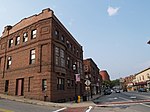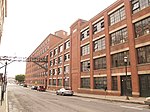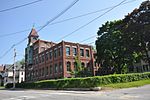Lake Street Fire Station
Buildings and structures in Gardner, MassachusettsDefunct fire stations in MassachusettsFire stations completed in 1884Fire stations on the National Register of Historic Places in MassachusettsHistoric district contributing properties in Massachusetts ... and 3 more
NRHP infobox with nocatNational Register of Historic Places in Worcester County, MassachusettsUse mdy dates from August 2023

The Lake Street Fire Station is an historic fire station in Gardner, Massachusetts. Built in 1884 to house a school and a fire company, it served as a school for just a few years, and as a fire station until the 1980s. It is architecturally distinguished as a good local example of late Victorian architecture. The building was listed on the National Register of Historic Places in 1980, and included in the West Gardner Square Historic District in 1985.
Excerpt from the Wikipedia article Lake Street Fire Station (License: CC BY-SA 3.0, Authors, Images).Lake Street Fire Station
Central Street, Gardner
Geographical coordinates (GPS) Address Nearby Places Show on map
Geographical coordinates (GPS)
| Latitude | Longitude |
|---|---|
| N 42.576944444444 ° | E -71.995 ° |
Address
Central Street 287
01440 Gardner
Massachusetts, United States
Open on Google Maps











